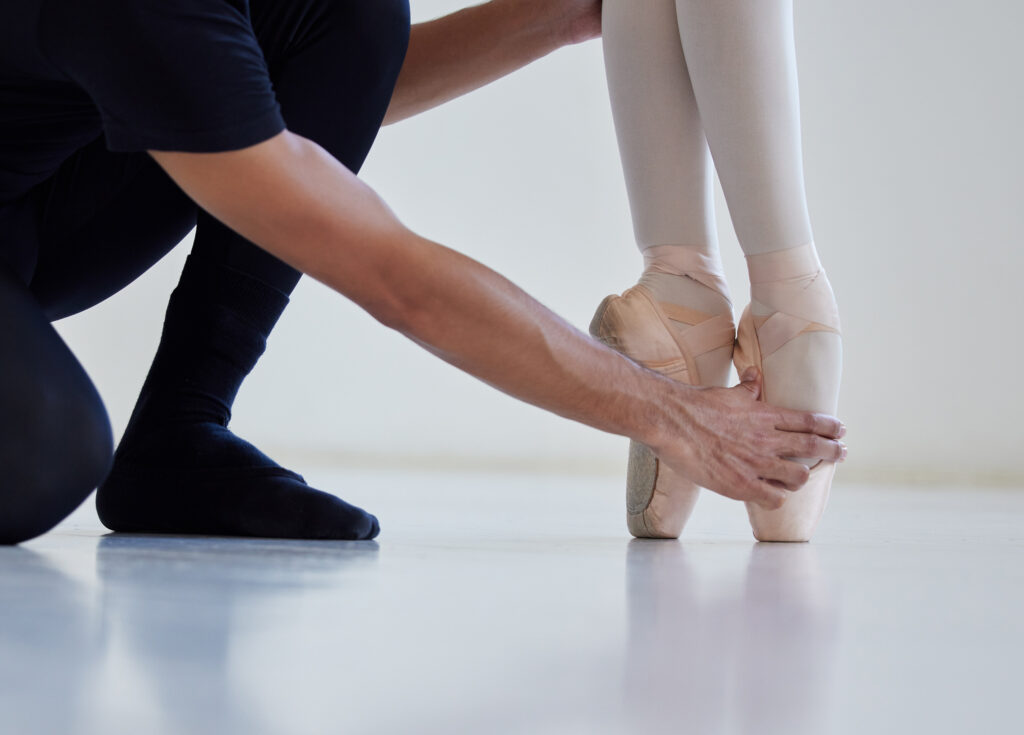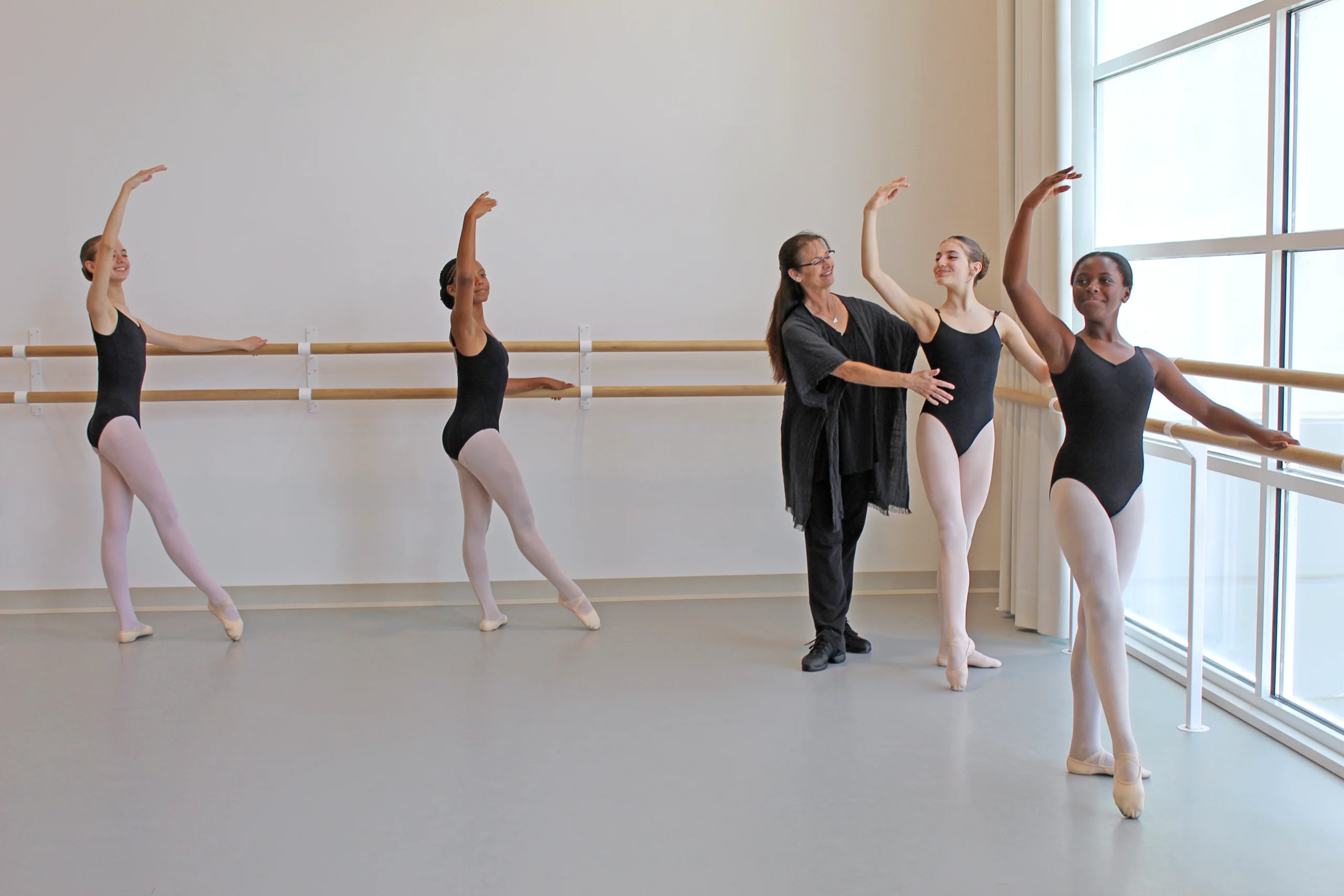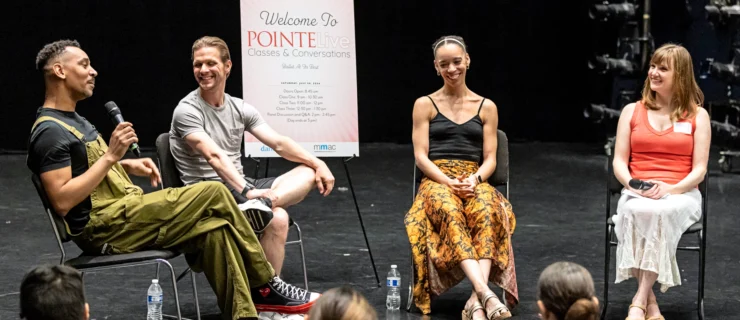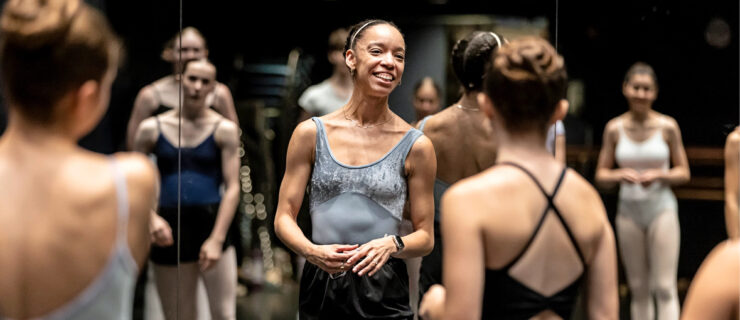Making the Most of Corrections, Whether They’re Individual or for the Whole Class
No ballet class is complete without a healthy dose of corrections. As dancers, we mostly crave them. Other times, they can make us feel put on the spot. Whether receiving the notes as a group or individually, it’s important to learn how to absorb them. What makes a correction stick, and how can you be cognizant of the different ways teachers communicate them? Here are some helpful tips to letting feedback sink in effectively.

Find Value in Group Corrections
In most instances, personal attention is a good thing—you may see a one-on-one correction as validation or feel recognized in front of your peers. Similarly, you might be disappointed or assume your teacher is ignoring you if you don’t receive that many. But corrections made to the whole class can be equally valuable, and it’s important not to disregard them.
Teachers rely on group corrections for a variety of reasons. If they see multiple students making the same mistake, for instance, it makes more sense to address the class than spotlight one dancer. Also, the larger the class, the more difficult it becomes for instructors to give individualized feedback.
In these instances, consider that your teacher may still be addressing you personally.“I am a firm believer that every correction is for everyone,” says Kim Marsh, head of the Academy program at Orlando Ballet School. “Even when giving individual corrections, I ask all the students to check themselves.”
Susan Brooker, the newly appointed artistic director of the ABT William Gillespie School at the Segerstrom Center for the Performing Arts in Costa Mesa, California, often turns a personal suggestion into a group correction in her classes. That way, every dancer is involved and benefits from the information. “Students have to take responsibility for feeling the correction independently,” she says.
You should always ask yourself, “Could this help my technique?” If you tend to lose focus when teachers offer group corrections, try physically applying them. “I find that insisting on this with younger students instills good study habits that remain with them as they mature,” says Brooker. “You need to feel the physicality of a correction to have an effect on your muscle memory.”
Professional dancers receive very few individual corrections in a large company class, so learning how to apply group notes is vital. This is especially true in corps de ballet work, where a team work ethic is imperative and instructions must be absorbed quickly.
Get More Comfortable With Individual Corrections
Boston Ballet II dancer Aidan Buss notes that while group feedback is valuable, he personally prefers one-on-one corrections. “It shows the commitment of the teacher to making you a better dancer,”he says.
But not every student is comfortable with being singled out. If you struggle with confidence or are particularly sensitive, you may feel embarrassed or think that you’re being picked on unfairly.
If your teacher starts giving you constructive feedback, you should see it in a positive light, says Brooker. “Corrections are not criticism, but information to help you improve. Breathe deeply and focus on the correction and positive interaction from your teacher.”
Marsh stresses that dancers can’t be shy in a performing profession. “If we don’t try, we will never know,” says Marsh. “We dance because we have passion,” she continues. With confidence, she notes, “you are able to share that passion, which is the greatest gift.”
Request Clarifications and Use Your Imagination
Sometimes corrections make more sense if you hear them phrased in a new way. If you’ve been given the same note over and over without success, try to think about the advice from a different perspective. Is there an image or idea that could help you apply it? (For example, imagining holding a small ball between your navel and spine may be a new way to fix a swayed back.) Don’t be afraid to ask your teacher questions—clarification and detail can help a correction suddenly “click.”
You may prefer when your teacher uses a hands-on approach to better feel a mistake in positioning or line. A teacher’s touch can clue you in to a drooping elbow or sickled foot. But be receptive when instructors use creative verbal cues, like metaphors, or ask you to imagine ideas. “I never like to manipulate students into positions,” says Brooker. “I want them to achieve the feeling for line and shape through their own physical sensitivity.”

Marsh likes to use visual imagery and analogies as a means of correcting students without physical touch. For example, she explains, “holding the arms in second should be like parentheses, not brackets.” Picture what your teacher is explaining—imagination can go a long way in fine-tuning your dancing.
Buss says that metaphors and imagery help him break down a correction into more understandable terms. “For example, if I have been given the correction to shift my upper body forward to have better placement, it helps me to hear ‘Imagine there is a line from the center of your shoulder blades going up past your head,’ ” he says.
If you’ve developed the muscle memory for a bad habit, it may take time to retrain your body. Don’t be afraid to use the mirror as a tool.
Whether you prefer individualized attention or group notes—or a hands-on approach compared to imagery—learning how to accept and apply all corrections that are given in the classroom is integral to your success. By taking the responsibility of applying all corrections given in class, you will be a stronger and more capable dancer.







